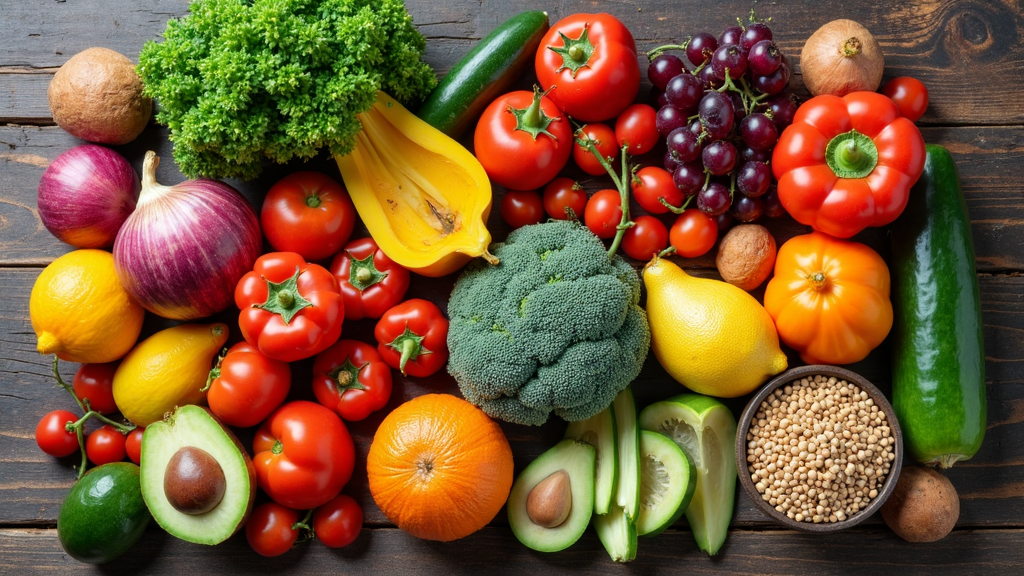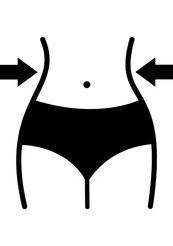Finding the best diet for women’s weight loss can feel pretty overwhelming with all the trends, advice, and conflicting information out there. I’ve definitely noticed that what works for one person can look totally different for another. So, I want to walk you through a practical approach to weight loss that focuses on health, balance, and realistic habits. I’ll cover what actually matters, common stumbling blocks, smart tips, and answer some questions I get asked all the time.

Understanding Women’s Unique Weight Loss Needs
Women’s weight loss is more than just following a standard plan. Factors like hormones, metabolism, and even stress can play a role. Changes during the menstrual cycle, perimenopause, and menopause can impact appetite, cravings, and energy use. Years of diet talk can make it confusing, especially when advice skips over the way women’s bodies respond to food and exercise.
Paying attention to these factors makes the adventure more personal and actually sustainable. Weight loss isn’t always about cutting food groups or chasing trends. It’s often about making food choices that help you feel energetic, satisfied, and supported day to day. Honoring the gender-based differences in how weight is gained or lost helps make the process smoother in the long run.
Best Diet Patterns for Weight Loss
The best “diet” isn’t a restrictive list of rules. It’s an eating pattern that’s easy to enjoy for the long haul. Here are a few science-backed approaches that work for many women:
- Mediterranean Diet: Focuses on whole grains, fruits, vegetables, healthy fats like olive oil, nuts, lean proteins, and the occasional glass of wine. This is linked with steady weight loss, lower inflammation, and heart health benefits.
- High Protein, Balanced Carb Diets: Upping protein (think lean meats, fish, eggs, dairy, beans) helps you feel full and keep muscle. Pairing proteins with whole grains or starchy veggies keeps blood sugar steady and energy up.
- Plantforward Diets: Going mostly plantbased leads to reduced calorie intake and more fiber, which helps you stay satisfied. It doesn’t have to be strictly vegetarian; flexibility works just fine for many women.
- Portion Care and Mindful Eating: The most sustainable eating plans focus less on cutting out foods and more on being aware of portions, hunger, and fullness.
It’s also worth checking out natural supplements designed for women’s weight loss. If you’re interested in an option, there’s an organic supplement I recommend here.
How to Build Your Perfect Plate
I like to keep things simple and visual. Here’s a super useful method I use:
- Fill half your plate with colorful nonstarchy vegetables (leafy greens, peppers, tomatoes, broccoli).
- Dedicate a quarter to good quality protein (chicken, turkey, fish, tofu, Greek yogurt, eggs).
- The last quarter is for whole grains or starchy veggies (quinoa, brown rice, sweet potatoes, beans).
Don’t forget a serving of healthy fat, like avocado, nuts, seeds, or a drizzle of olive oil. This combo is not only filling but gives a stable energy boost and helps prevent major cravings later on. You can also swap in different vegetables and proteins to keep your meals fun and satisfy your cravings throughout the week.
Getting Started With Your Weight Loss Diet
Jumping into a new routine works better when it’s realistic. Here are some steps I always recommend to kick things off smoothly:
- Assess Current Habits: Spend a few days tracking meals, snacks, stress eating, and even water intake. This isn’t about judging yourself—it’s about getting a clear picture of where you’re starting.
- Set Small Goals: Instead of aiming to lose a big number fast, start with weekbyweek targets. For example, add more vegetables to your meals, or swap sugary drinks for sparkling water.
- Plan Simple Meals: Build a short list of easy, healthy recipes you can repeat. This avoids lastminute takeout splurges and keeps life simple.
- Stock Up for Success: Having the right groceries ready makes it much easier to make good choices. I keep fridge staples like precut veggies, plain Greek yogurt, nut butter, whole grain bread, and some canned tuna or beans.
- Move Your Body Daily: Even a brisk walk makes a difference. Exercise helps burn calories, manage stress, support hormones, and can help preserve muscle during weight loss.
Don’t forget that everyone’s starting point is different. It’s important to respect your own pace and not compare yourself to others on this adventure.
Things to Watch Out For on Your Weight Loss Adventure
Weight loss isn’t just about what’s on your plate. Here are some things to keep an eye on that can cause bumps in the road or slow your progress:
- Hormonal Changes: Your period, perimenopause, and menopause can all change cravings, sleep, and energy levels. Tracking your cycle can help explain ups and downs in hunger and even water retention.
- Hidden Calories and “Health” Foods: Fancy coffee drinks, protein bars, or salads loaded with creamy dressings can add up before you realize it. Scanning labels and portion sizes helps keep things in check.
- Stress Eating: When things get tense, reaching for snacks is super common. Having healthy, portioned snacks around can help, and building other ways to handle stress (like taking a walk, stretching, or calling a friend) is important too.
- Sleep: Getting less than 7 hours a night is tied to weight gain and more cravings for sweet or fatty foods. Making sleep a real priority is just as essential as the food you eat.
Hormone Health and Metabolism
Estrogen and other hormones play a surprising role in metabolism and how the body stores fat. During menopause, metabolism may slow, and fat distribution can mix up. Eating enough protein, keeping activity steady, and avoiding ultra lowcalorie diets can help prevent your metabolism from slowing down too much.
How to Avoid Quick Fix Traps
It’s tempting to try restrictive cleanses or cut out entire food groups for fast results, but these often backfire. Fad diets may lead to weight regain and can even slow your metabolism. Building lasting habits is way more effective and a lot less stressful on your body—and mind.
Supplements: Do They Help?
Certain natural supplements can give a boost to healthy weight loss, especially for women dealing with hormonal changes. If you’re interested in something natural and safe, check out this option: Organic Women’s Weight Loss Supplement. Always ask your healthcare provider before starting any new supplement.
Advanced Tips and Smart Habits
Ready to take things a step further? These tips often make a big difference, especially if your progress slows:
Eat Mindfully: Slow down with each meal, notice flavors, and check in with hunger levels. This helps prevent overeating, even with healthier foods.
Watch Weekend Choices: Many people stick to a plan during the week, but weekends are less structured and can stall progress. Keeping meals and routines balanced on Saturdays and Sundays helps a lot.
Add Fiber: Fiber from veggies, fruits, beans, and whole grains helps keep digestion regular, lowers cravings, and supports gut health. Aim for at least 25 grams a day.
Track Progress, Not Perfection: Use a journal, photos, or an app to track wins, challenges, and feelings. This helps you spot patterns, stay motivated, and celebrate success.
Celebrate Small Victories: Every step—whether it’s a healthy swap, another glass of water, or making time to move—adds up. Give yourself appreciation along the ride.
Everyday Foods to Keep on Hand
- Leafy greens (spinach, kale, romaine)
- Berries (fresh or frozen, they’re low calorie and packed with nutrients)
- Lean proteins (chicken, fish, tofu, eggs)
- High fiber carbs (oatmeal, sweet potatoes, brown rice, beans)
- Healthy fats (avocado, olive oil, nuts, seeds)
Having these stocked makes healthy decisions super quick and helps you avoid reaching for lessnutritious options. I also like to throw in canned beans, frozen veggies, and some unsweetened nut milks for quick meals and snacks. Preparing ingredients ahead when you have time gives you an edge on busier days.
Frequently Asked Questions
Here are questions I get from friends and readers wanting to get started on a healthier weight loss path:
How fast should I expect to lose weight?
Answer: Safe, steady weight loss is about half a pound to two pounds per week. Trying for fast fixes often leads to regaining lost pounds and leaves you feeling run down. Aim for steady results for better long-term success.
Do I need to count calories?
Answer: Not always. Focusing on whole foods, eating slowly, and tuning into hunger signs works for a lot of women. Tracking portions for a few days can help you notice patterns, especially if you hit a plateau.
Is it okay to have treats or “bad foods”?
Answer: Yes! Treats are part of life. It’s about balance; enjoying desserts, snacks, or special meals without guilt is healthier for your mindset and stops you from being too strict.
Should I avoid all carbs?
Answer: Carbs from whole grains, fruits, vegetables, and beans are full of nutrients and help keep you full. Skipping all carbs isn’t necessary and can leave you feeling tired or craving more food later.
Staying Motivated and Keeping Things Simple
Weight loss is a lot more doable when it fits your lifestyle and doesn’t feel like constant sacrifice. I like to remind myself that progress isn’t about perfection—it’s about growing habits that stick for the long term. Focus on adding healthy foods, keeping your meals balanced, listening to your body, and being patient with yourself. If you’re looking for extra support through supplements, make sure to check out this organic option made for women’s weight loss. Small changes really do add up and help you feel healthier, more energized, and more confident every day. Remember to track your wins, appreciate the process, and give yourself the thumbs up for every healthy choice you make along the road!
